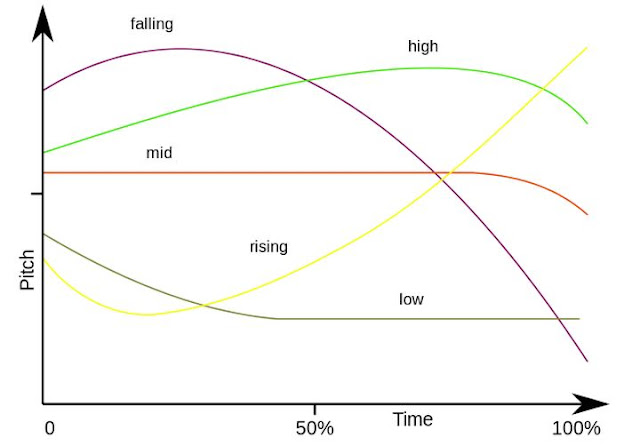11/24/2013
9/14/2013
Thai is a member of the Tai group of the Tai–Kadai language family
Thai is a member of the Tai group of the Tai–Kadai language family
Credit : http://en.wikipedia.org/wiki/Tai%E2%80%93Kadai_languages
International Phonetic Alphabet (IPA) and Tones
In each cell below, the first line indicates International Phonetic Alphabet (IPA), the second indicates the Thai characters in initial position (several letters appearing in the same box have identical pronunciation).
THAI TONES
Credit : http://en.wikipedia.org/wiki/Thai_language#Languages_and_dialects
8/16/2013
8/11/2013
5/26/2013
4/25/2013
THE RULE OF KING RAMKHAMHAENG
The most famous king of Sukhothai is King Ramkhamhaeng, the founder's third son. He is the first Thai ruler to leave detailed epigraphical accounts of the Thai state, beginning with his own early life. He earned his title at age 19 on a campaign with his father against a neighboring state, in which, he saved the day by defeating the enemy leader in a hand to hand elephant combat. As a result, he was granted the name Phra Ramkhamhaeng (Rama the Brave) his parent.
The Sukhothai kingdom at the time of King Ramkhamhaeng's accession was quite small, consisting of only the city and surrounding areas. By the end of his reign, he had increased its size ten folds: from Luang Prabang in the east through the central plains to the southern peninsula. The Mon state in lower Burma also accepted his over lordship.
King Ramkhamhaeng was noted as an administrator, legislator and statesman, and sometimes as an amorous king. He is credited with the invention of Thai script, which he achieved by systemizing the khmer alphabet with Thai words. The new script was employed for the first time in an inscription of 1292, in which King Ramkhamhaeng depicted the idylic conditions of his kingdom - fertile land and plentiful food, free trade, prohibition of slavery, and guaranteed inheritance.
One of the keys to King Ramkhamhaeng's success lays in his diplomatic relations with China. The Mongol Court pursued and "divide - and - rule" policy and supported the Thai' rise at the expense of the Khmers. King Ramkhamhaeng was said to have gone the China himself, and the History of the Yuan records seven missions from "Sien" (Sukhothai) between 1282 and 1323. Chinese craftsmen came to teach the Thais their secrets of glazing pottery, resulting in the production of the famous ceramic ware of Sawankhaloke, whose kilns still remain.
Adapted from : William Warren, Star Black and M.R. Priya Rangsit, Thailand, APA Publications, 1989, pp. 21-22, Yupin Pokthitiyuk, English Department, Factulty of Liberal Arts, Thammasat University.
The Sukhothai kingdom at the time of King Ramkhamhaeng's accession was quite small, consisting of only the city and surrounding areas. By the end of his reign, he had increased its size ten folds: from Luang Prabang in the east through the central plains to the southern peninsula. The Mon state in lower Burma also accepted his over lordship.
King Ramkhamhaeng was noted as an administrator, legislator and statesman, and sometimes as an amorous king. He is credited with the invention of Thai script, which he achieved by systemizing the khmer alphabet with Thai words. The new script was employed for the first time in an inscription of 1292, in which King Ramkhamhaeng depicted the idylic conditions of his kingdom - fertile land and plentiful food, free trade, prohibition of slavery, and guaranteed inheritance.
One of the keys to King Ramkhamhaeng's success lays in his diplomatic relations with China. The Mongol Court pursued and "divide - and - rule" policy and supported the Thai' rise at the expense of the Khmers. King Ramkhamhaeng was said to have gone the China himself, and the History of the Yuan records seven missions from "Sien" (Sukhothai) between 1282 and 1323. Chinese craftsmen came to teach the Thais their secrets of glazing pottery, resulting in the production of the famous ceramic ware of Sawankhaloke, whose kilns still remain.
Adapted from : William Warren, Star Black and M.R. Priya Rangsit, Thailand, APA Publications, 1989, pp. 21-22, Yupin Pokthitiyuk, English Department, Factulty of Liberal Arts, Thammasat University.
1/07/2013
Subscribe to:
Comments (Atom)







